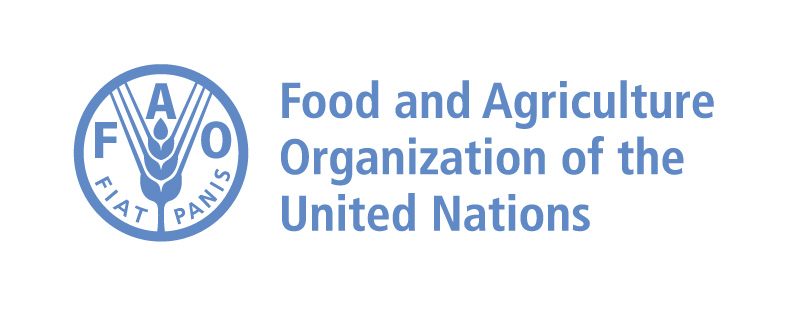Resilience Index Measurement and Analysis 2019
Uganda, 2019
Get MicrodataIdentification
UGA_2019_RIMA_v01_M_v01_A_OCS
Resilience Index Measurement and Analysis 2019
| Name | Country code |
|---|---|
| Uganda | UGA |
Other Household Survey [hh/oth]
This is a follow-up to the baseline survey that was conducted in 2016. Thus, the RIMA 2019 datasets can be combined as a panel with the RIMA 2016 datasets. The data is only meant to track households and not individuals. Therefore, there is no common individual identifier.
Sample survey data [ssd]
Households
Scope
The description of scope for the survey include:
- Household roster
- Education
- Dwelling and Infrastructure
- Durable Assets
- Food and non-food consumption
- Coping strategies
- Social networks and shocks
- Employment and labour
- Household enterprise
- Credit
- Other income sources
- Crop and livestock production
- Agricultural inputs and assets
Coverage
Regional coverage
Households in Karamoja region.
Producers and sponsors
| Name |
|---|
| Food and Agricultural Organization of the United Nations |
| Office of the Prime Minister of Uganda |
| Name | Role |
|---|---|
| Food and Agricultural Organization of the United Nations | Technical support in data collection and/or production of reports |
| United Nations Children's Fund | Technical support in data collection and/or production of reports |
| World Food Programme | Technical support in data collection and/or production of reports |
| Office of the Prime Minister of Uganda | Technical support |
| Uganda Bureau of Statistics | Technical support |
| Inter-Governmental Authority on Development | Technical support |
| Name | Role |
|---|---|
| European Union | Funding |
| Food and Agriculture Organization of the United Nations | Funding |
| United Nations Children's Fund | Funding |
| World Food Programme | Funding |
Sampling
The sample of the household survey is composed in total of 2 380 households. The sampling strategy is stratified according to the following five strata: (1) target households, which are those reached by the JRS in 12 parishes of the Moroto and Napak districts; (2) direct spillover households, which are those located in the remaining parishes of the Moroto and Napak districts and are not involved in the JRS; (3) indirect spillover households, which are those located in the two districts where the JRS is not actually operating (Kotido and Nakapiripirit) but where other UN projects are ongoing; (4) the ‘different ethnicity’ group, which includes those households located in two districts (Abim and Amudat) populated with ethnic groups that are different from the Karamojong;21 (5) and the pure control group, comprised of households located in the Kaabong district, which have the same ethnic group and socioeconomic conditions, mostly pastoralism, as the target group, but which are not involved in the JRS. The overall attrition rate in the sample if 17 percent, which is reduced to 9 percent when replaced households are included in the sample.
Data collection
| Start | End |
|---|---|
| 2019-11 | 2019-12 |
- Computer Assisted Personal Interview [capi]
Data Access
| Is signing of a confidentiality declaration required? | Confidentiality declaration text |
|---|---|
| yes | The users shall not take any action with the purpose of identifying any individual entity (i.e. person, household, enterprise, etc.) in the micro dataset(s). If such a disclosure is made inadvertently, no use will be made of the information, and it will be reported immediately to FAO |
Micro datasets disseminated by FAO shall only be allowed for research and statistical purposes. Any user which requests access working for a commercial company will not be granted access to any micro dataset regardless of their specified purpose. Users requesting access to any datasets must agree to the following minimal conditions:
- The micro dataset will only be used for statistical and/or research purposes;
- Any results derived from the micro dataset will be used solely for reporting aggregated information, and not for any specific individual entities or data subjects;
- The users shall not take any action with the purpose of identifying any individual entity (i.e. person, household, enterprise, etc.) in the micro dataset(s). If such a disclosure is made inadvertently, no use will be made of the information, and it will be reported immediately to FAO;
- The micro dataset cannot be re-disseminated by users or shared with anyone other than the individuals that are granted access to the micro dataset by FAO.
Disclaimer and copyrights
The user of the data acknowledges that the original collector of the data, the authorized distributor of the data, and the relevant funding agency bear no responsibility for use of the data or for interpretations or inferences based upon such uses.
Contacts
| Name | Affiliation | |
|---|---|---|
| FAO RIMA Team | Food and Agriculture Organization | fao-rima@fao.org |
Metadata production
DDI_UGA_2019_RIMA_v01_M_v01_A_OCS
| Name | Affiliation | Role |
|---|---|---|
| Office of Chief Statistican | Food and Agriculture Organization | Metadata producer |
| Development Economics Data Group | The World Bank | Metadata adapted for World Bank Microdata Library |
2022-11-21
Metadata version
Version 01 (November 2022): This metadata was downloaded from the FAO website (https://microdata.fao.org/index.php/catalog) and it is identical to FAO version (UGA_2019_RIMA_v01_EN_M_v01_A_OCS). The following two metadata fields were edited - Document ID and Survey ID.
